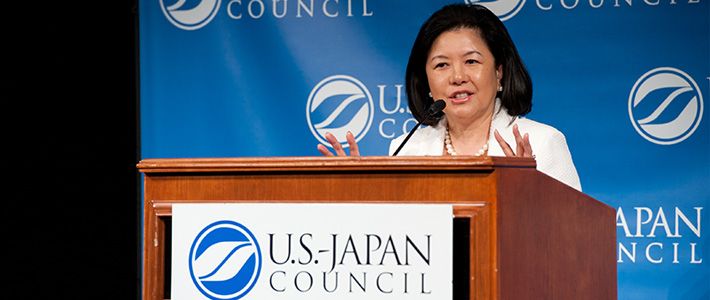
The Potential of “Tomodachi” to Connect People
Politics Economy Culture- English
- 日本語
- 简体字
- 繁體字
- Français
- Español
- العربية
- Русский
The second-generation Japanese Americans, or nisei, faced tough times during World War II. During this period young Japanese Americans, mainly from Hawaii, joined the US Army’s 442nd Regimental Combat Team to serve their country. Senator Daniel Inouye was one of the soldiers whose bravery won US society’s respect for Japanese Americans. Many of these soldiers later recalled bouts of soul-searching about their Japanese roots—the cultural heritage that supported them as they went through those hardships. How do today’s generations of Japanese Americans perceive their ethnic roots? What are their thoughts on US-Japan relations? We asked Irene Hirano Inouye, who received the 2012 Japan Foundation Award for her contributions to fostering ties between the people of the United States and Japan, for her views.
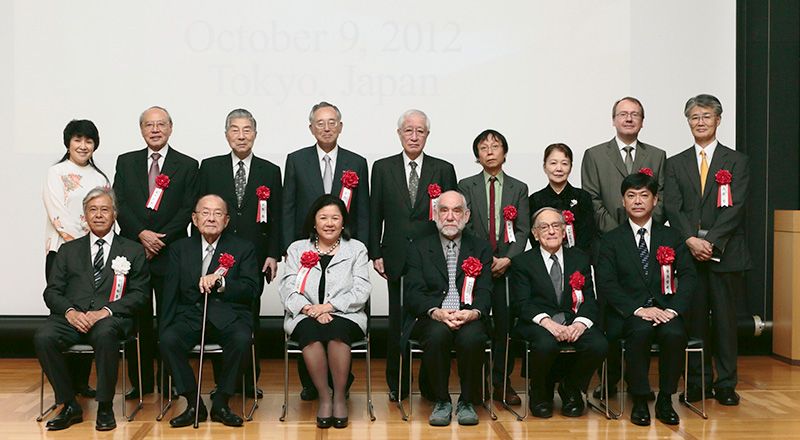 Senator Daniel K. Inouye and Irene Hirano Inouye, second and third from the left in the front, at the 2012 Japan Foundation Awards ceremony on October 9, 2012. Courtesy: The Japan Foundation
Senator Daniel K. Inouye and Irene Hirano Inouye, second and third from the left in the front, at the 2012 Japan Foundation Awards ceremony on October 9, 2012. Courtesy: The Japan Foundation
The Need to Connect With Roots
INTERVIEWER You’ve been committed for many years to connecting Japanese Americans to Japan. Where does your sense of mission in this area come from?
IRENE HIRANO INOUYE Well, I am very proud of my Japanese ancestry. I’m a sansei, third generation. My grandparents on my father’s side came from Fukuoka, and my mother was born in Japan. I always had a close connection to my roots in Japan. Many of the sansei I’ve met, though, know very little about Japan or their ancestry. When I was working at the Japanese American National Museum, I began to meet more sansei and yonsei [fourth generation], and I realized that I had a different experience from many of them. As part of the work I was doing, it was important to provide opportunities for Japanese Americans to reconnect to Japan. For the future of the Japanese American communities and the younger Nikkei generations, I felt that it would be very detrimental if we didn’t feel a connection to the land of our ancestry. That would begin to signal what I thought would be a decline in the US-Japan relationship. This was much of the reason why I began to do work in not only building a Japanese American community, but in working to connect that community to Japan.
INTERVIEWER At the US-Japan Annual Conference held on October 5 in Seattle, the participants agreed to work toward stronger bilateral relations. Currently our two countries are facing many issues, including the “base problem” on Okinawa, and many Japanese are concerned about the future of US-Japan ties. How do you see the status of these ties now?
INOUYE Well, it’s very important that we have a strong US-Japan relationship. Whether it’s at the security level, the government level, the business level, or the people-to-people level, what has enabled us to maintain such a good relationship over so many years since World War II is the shared mutual interests that we have. Of course we have mutual defense interests in the Asia-Pacific region and we’ve developed our economic relationship in many ways—but more fundamental, I think, to the US-Japan relationship is the people-to-people connections. That’s why I do the work I do. At our conference, we discussed many ongoing issues from a forward-looking perspective: How do we build greater economic collaboration? How do we look for new opportunities for America and Japan to collaborate on things like infrastructure, medicine, new technology, and so forth?
We have to continue to find ways that the two countries can build even stronger ties and together ensure peace and stability in the Asia-Pacific region. What happens between countries in Asia affects those of us in the United States. We have large Chinese American, Indian American, and other communities in the United States—many people from throughout Asia—and so when there are tensions, people in the United States are concerned. It’s in our best interest as Japanese Americans to keep the US-Japan relationship robust so that the tensions in Asia don’t escalate. We feel that it’s important for us to understand what’s happening globally, what’s happening between Japan and other Asian countries. While there may be differences in the region, we’ve got to work to ensure good relations among Asian Americans in the United States.
Investing in the Future
INTERVIEWER What is the current status of the Japanese American community? How do you view the sense of identity of yonsei and gosei, the fourth and fifth generations, and their attitudes toward Japan?
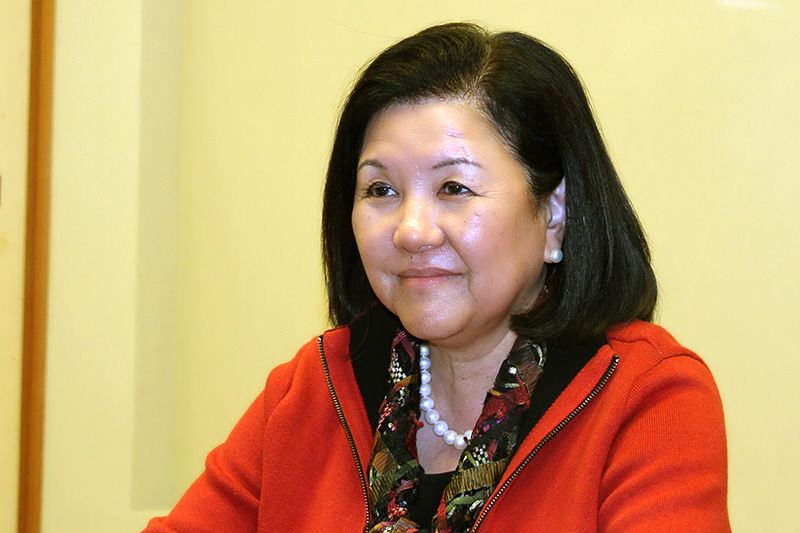 INOUYE Within the Japanese American community, we have what is probably the highest level among all Asian American ethnic groups of “outmarriage,” with Japanese Americans marrying someone other than another Japanese American. This level is around 60 to 65 percent. In recent years, the Japanese American community has also not had a high level of immigration from Japan to the United States as compared to the Chinese, Koreans, Indians, and other ethnic groups. And Japanese Americans have a relatively low birthrate, just like the Japanese. So the community has not grown as fast or as much as other Asian American groups.
INOUYE Within the Japanese American community, we have what is probably the highest level among all Asian American ethnic groups of “outmarriage,” with Japanese Americans marrying someone other than another Japanese American. This level is around 60 to 65 percent. In recent years, the Japanese American community has also not had a high level of immigration from Japan to the United States as compared to the Chinese, Koreans, Indians, and other ethnic groups. And Japanese Americans have a relatively low birthrate, just like the Japanese. So the community has not grown as fast or as much as other Asian American groups.
However, I think it’s interesting that the majority of yonsei and gosei are of mixed heritage. Ethnically they’re only part Japanese. The United States census now allows individuals to self-identify as “mixed heritage” when reporting their ethnic background. If we look at the census numbers, the number of ethnically Japanese Americans is actually growing. It’s bigger than the group who said “I’m just Japanese.”
I believe it was the sansei generation primarily that had a disconnection with Japan. So part of the work that I’ve been doing is to connect sansei with Japan. I find that the younger generations—the fourth and fifth—are much more open to learning about Japan. They’re part of the generation that grew up with manga and other forms of Japanese culture. I’ve met many young Japanese Americans who want to come to Japan, who want to learn the language, much more so than the sansei did.
Many young Americans are interested in all the things that have come to be a part of the “new Japan.” I have hope for the younger generation. This is why I think it’s so important to invest in young people: young Americans, including Japanese Americans, and young Japanese alike. The work that the US-Japan Council has been doing on the Tomodachi Initiative is vital. As this initiative has begun bringing young Japanese to the United States, we have whenever possible helped young Japanese to meet young Japanese Americans. It will be important to ensure that the next generations of Japanese Americans are more connected to Japan than the sansei were. I see a great deal of enthusiasm among young Japanese Americans who want to learn more.
No More “Japan Passing”
INTERVIEWER In the past we’ve had strong Japanese American leaders who influence bilateral relations, like Senator Inouye. But it seems we see fewer of them today. What must be done for Japanese Americans to foster stronger bilateral relations?
INOUYE The reason we created the US-Japan Council in 2009 was to address this very question. Although many of us had been addressing US-Japan relations in our various professions, we felt that the time had come to create an organization of Japanese American leaders who are dedicated to working on US-Japan relations. The Council is made up of leaders from all different fields who are either working in or committed to building that relationship. As you mentioned, we just had the US-Japan Council’s annual conference in Seattle. Over 350 people came together and there was a lot of enthusiasm, a lot of energy, a lot of optimism about how Japanese Americans could work with other Americans and with Japanese leaders to ensure that we have strong ties at all different levels.
There are many Japanese Americans in very high positions in various sectors. The Council’s role is to connect them with their counterparts here in Japan. When we started the Council in 2009 and made the decision to headquarter the office in Washington, DC, the most common way to describe America’s relationship with its partner was “Japan passing.” Everyone was concerned about Japan not being on the radar screen—not having the attention of American leaders. We knew that the relationship was relatively stable, and sometimes when things are stable, people don’t think about the relationship. We felt it was important to change that.
I think today it’s very different. I was at an event recently in Washington and someone said, “Oh, there’s so much US-Japan activity happening.” So things have changed, and I hope that we have been able in some way to contribute to that.
Sowing the Seeds of Student Interest
INTERVIEWER The US-Japan Council is helping many young Japanese to visit the United States. In the bigger picture, though, the number of Japanese students going abroad to study has declined by 30 percent from the peak in 2005. What do you think we can do to change the inward-looking trend among the youth?
INOUYE Well, that was exactly the reason why we decided to focus the Tomodachi Initiative on young people, because we knew that those were the trends that were being discussed even before March 11. Together with US Ambassador to Japan John Roos and the US Embassy, the US-Japan Council thought about what unique contributions we could make not only to the rebuilding of the Tōhoku region, but more broadly to the building of the US-Japan relationship for the long term. We felt that by encouraging young people—particularly those in junior high and high school—through these exchanges, that perhaps we could change the trend.
In the initial programs we’ve been offering, the applicant interest has been very, very strong. For example, we had a program to send 300 high school students to UC Berkeley for a three-week leadership program. We had over 2,000 applicants for those 300 slots. There was concern, initially, about whether young people in Tōhoku—which already has a lower number of young people, and who perhaps are going to be less interested in travel—would be interested. But we’re finding the opposite. We had another home-stay program for sixty students, sponsored by Coca-Cola. Over 900 high-school students applied for that.
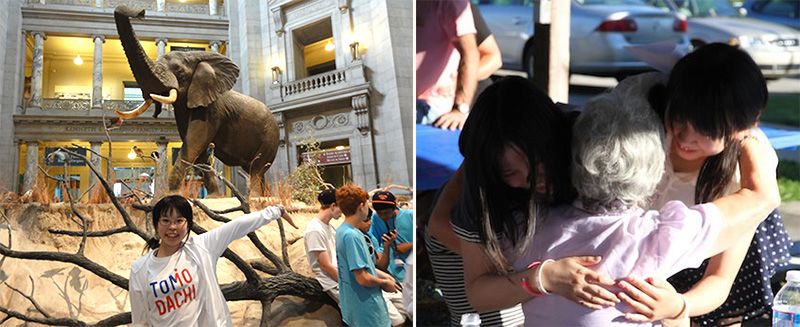 Sixty high school students from the Tohoku region affected by the Great East Japan Earthquake experienced varied activities while staying at American households in several cities across the United States during the three-week Tomodachi Summer 2012 program. Courtesy: EIL Japan
Sixty high school students from the Tohoku region affected by the Great East Japan Earthquake experienced varied activities while staying at American households in several cities across the United States during the three-week Tomodachi Summer 2012 program. Courtesy: EIL Japan
Our hope is that if we can take students from Japan to the United States and have them meet young Americans, they will see that the United States is a place where they could be comfortable studying; and once their parents are comfortable with it as well, that might help to reverse the trend. By introducing the United States to them as early as their junior-high-school years, it may make it easier to encourage them to go to college there in the future.
Based on the initial response that we’ve seen on the applicant side, as well as interviews with the students when they finish the programs, they are much more interested in the United States as a place where they would like to go and study. Some of the first students who went on these programs are now applying to school in the States. So it’s just a start, but I think it’s an important way that we can reverse the trend.
Looking Toward Civil Society
INTERVIEWER Currently Japan seems to be losing its confidence. How do you see the state of the Japanese people now? What do you think we can do to regain our national confidence?
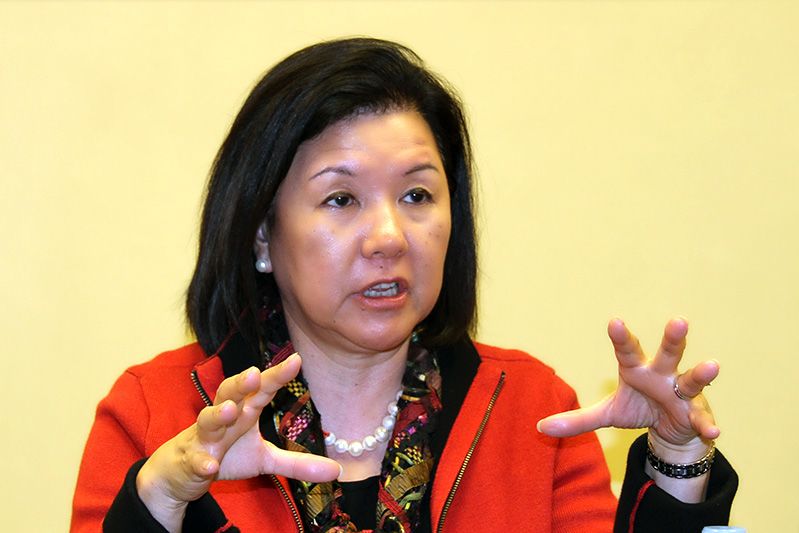 INOUYE I think that in the March 11 disasters, we saw how the people of Japan responded: how they remained calm, how they persevered, and so many of the human stories that came out during that time, not just in Tōhoku, but around the country. I think this really captured the admiration of Americans and many people around the world. While there may have been criticism of the government’s response, we had those Japanese values shining through. Again, I’m very proud of my Japanese ancestry, and I believe what we saw after March 11 shed light on who the Japanese are.
INOUYE I think that in the March 11 disasters, we saw how the people of Japan responded: how they remained calm, how they persevered, and so many of the human stories that came out during that time, not just in Tōhoku, but around the country. I think this really captured the admiration of Americans and many people around the world. While there may have been criticism of the government’s response, we had those Japanese values shining through. Again, I’m very proud of my Japanese ancestry, and I believe what we saw after March 11 shed light on who the Japanese are.
On the flip side of how people respond in crisis, of course, there’s the sort of political leadership that often doesn’t live up to what we would like from our elected officials. This is something that’s true in the United States as well. So there are things that Japan as a country needs to change. There is a certain amount of rigidity—a certain amount of tradition and structure that seems to be stifling creativity and innovation. Japan has built major companies and industries in the past. We know that’s a part of the Japanese experience. The question is: what has happened to that? I don’t know the answer, but I believe that having young people experience other countries is something that will help.
We’re finding that a lot of young women are applying to the Tomodachi programs. Japan has many talented women who could contribute to the economy and perhaps bring change to the limited growth situation. When it comes to the specifics of how to get this to happen, I don’t know the answer. I just know that I’m really inspired when I meet young people, when I meet Japanese in people-to-people relationships. There may be much more optimism among those of us living outside of Japan than is talked about by those in Japan.
One thing I have recognized since March 11 is the real strength in the civil society sector—the NGOs and NPOs—which in the United States is an important part of society. Here in Japan, there has been a lot of reliance on government and business, and I think there’s tremendous potential for civil society to contribute more. People here retire earlier than in most other countries, so you have a workforce that could have a second career in volunteerism, in contributing to their communities and to society. I hope that one of the things that comes out of the aftermath of the March 11 disasters is greater support for civil society. I think there’s great opportunity there.
(Based on an October 12, 2012, interview. Interviewer Harano Jōji is representative director of the Nippon Communications Foundation.)
Japan United States March 11 America bilateral Irene Hirano Inouye US-Japan Council Japanese Americans Nisei sansei Tomodachi Initiative ethnicity
